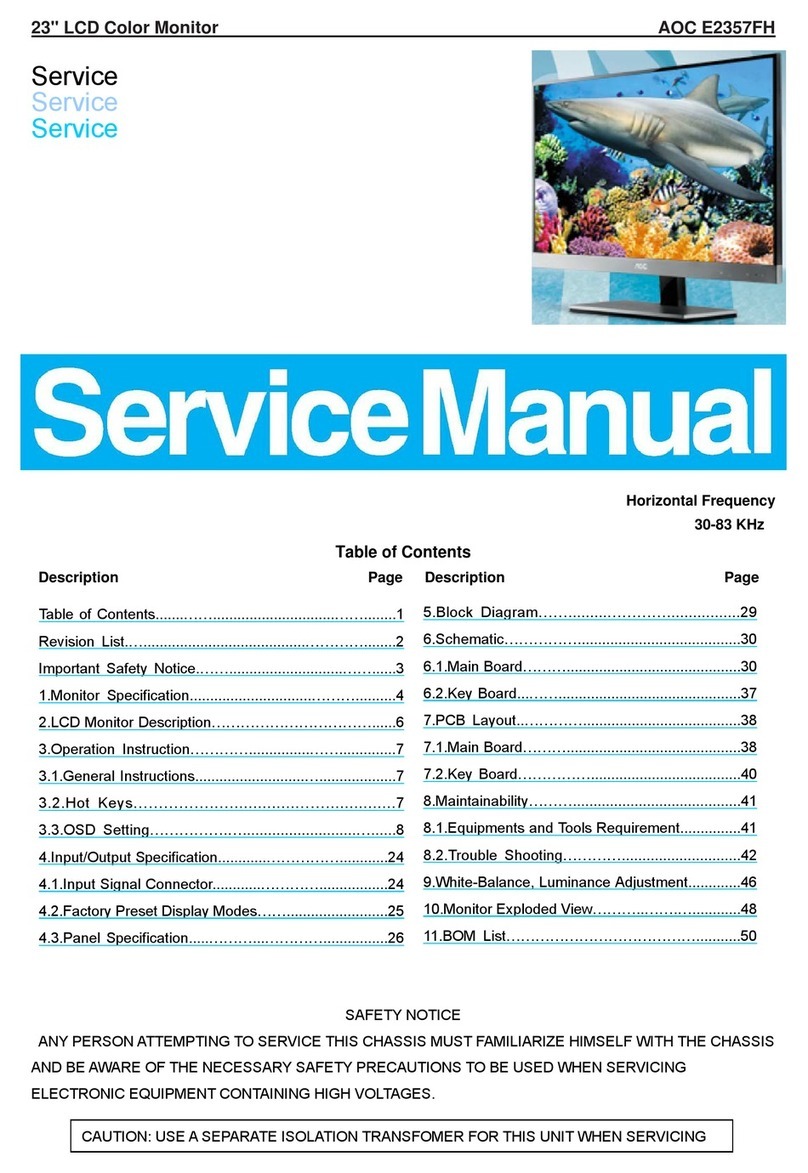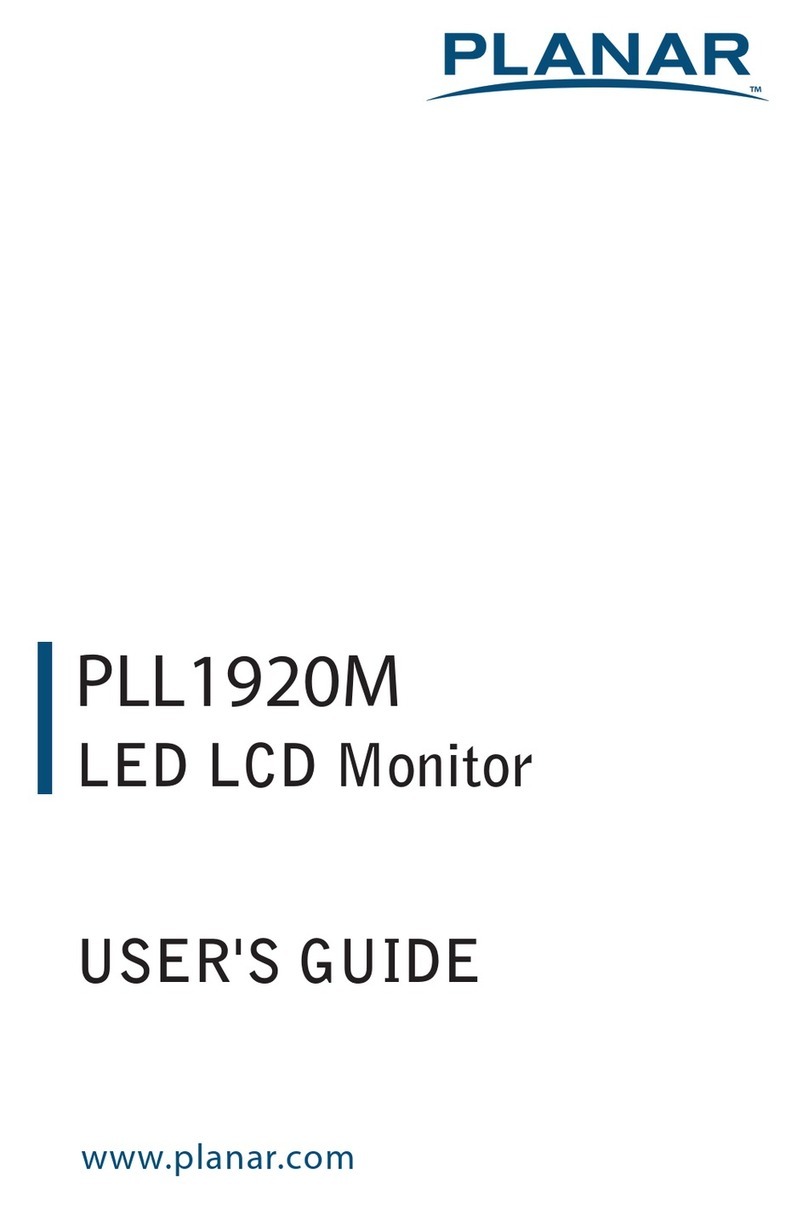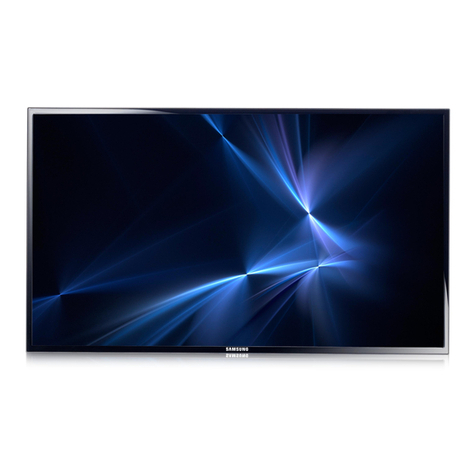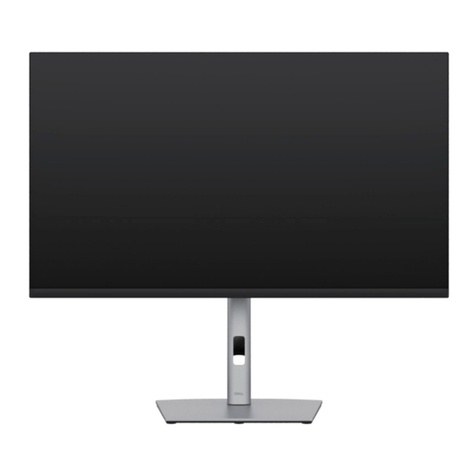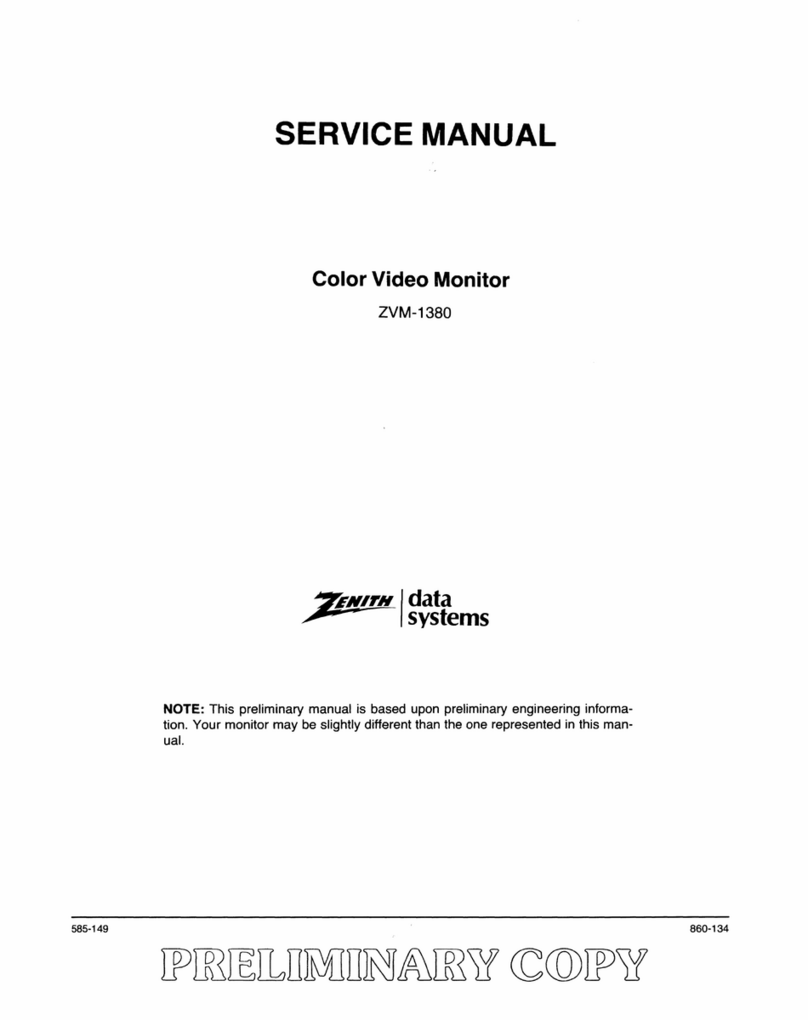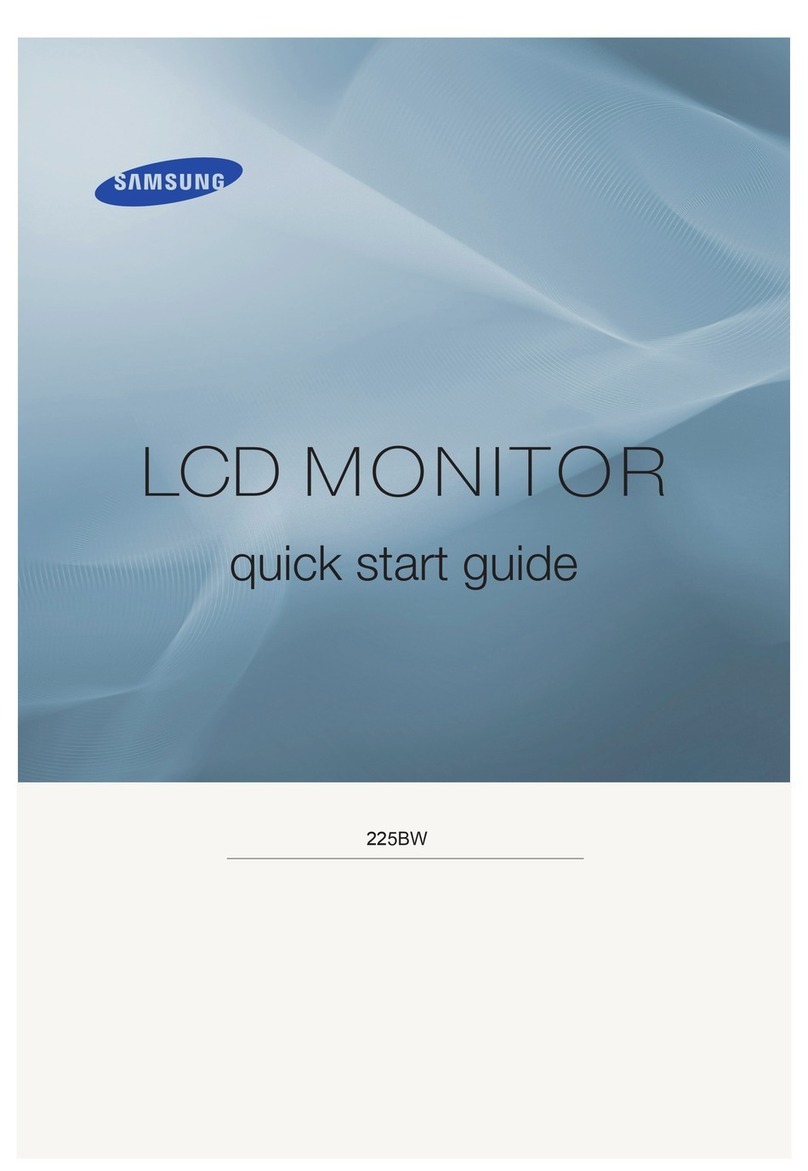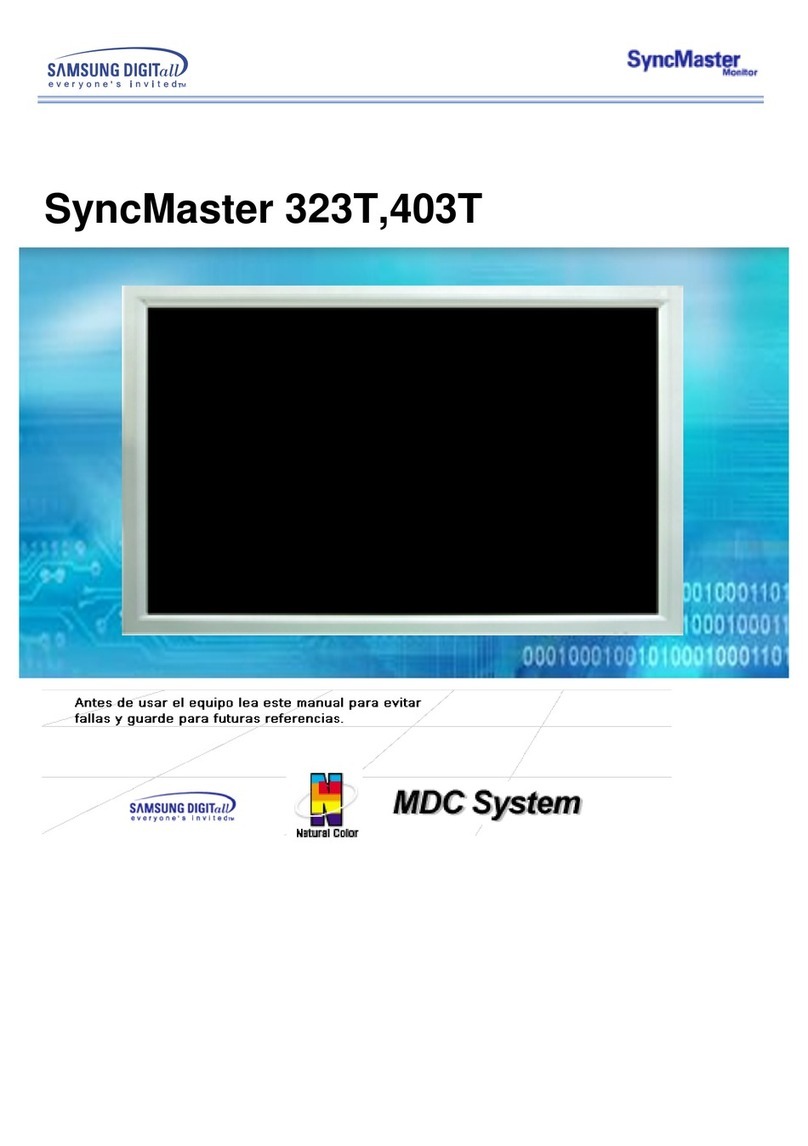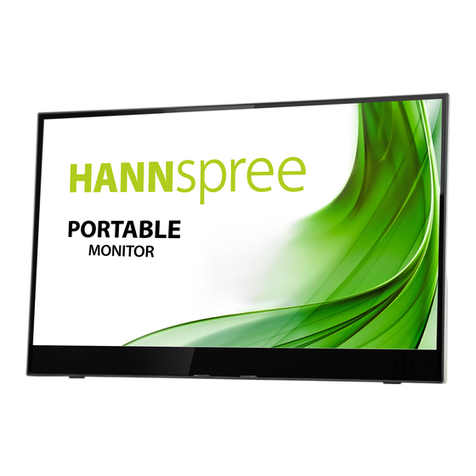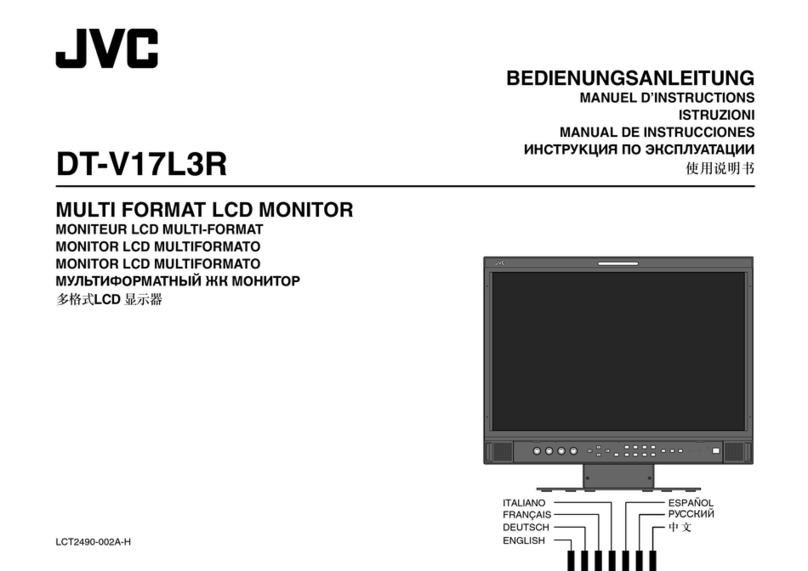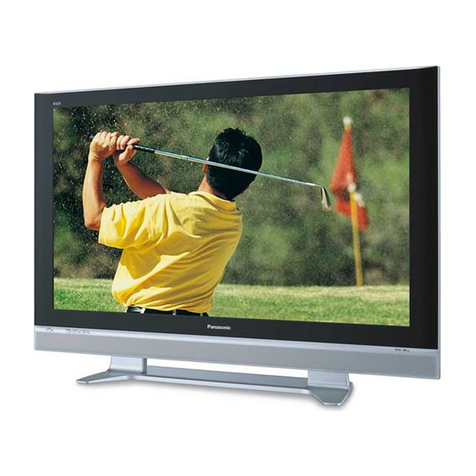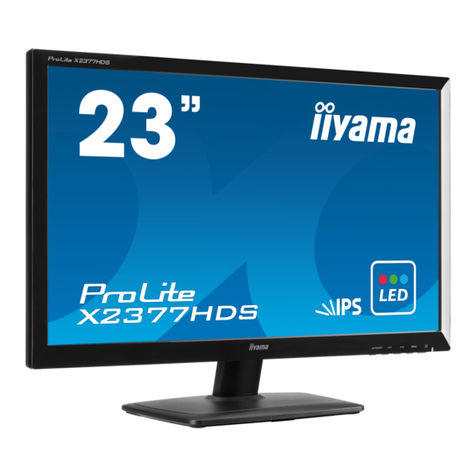epro MMS 6000 User guide

System Manual MMS 6000
Part 2
Direction for use
Shaft Vibration Monitor
MMS 6110
Date : 15.02.2004
Valid for
Configuration Software MMS 6910W Version 1.01, 1.03 f.f.
Firmware Version 1.20, 1.30 f.f.
Third edition
6110-00004
MMS

Please note
In correspondence concerning this instrument, please quote type number and serial number as given
on the type plate and software version if applicable.
Bitte beachten
Bei Schriftwechsel über dieses Gerät wird gebeten, die Typennummer und die Gerätenummer wie auf
dem Typenschild aufgedruckt, sowie die Softwareversion (wenn vorhanden), anzugeben
Important
As this instrument is an electrical apparatus, it may be operated only by trained personnel. Mainte-
nance and repairs may also be carried out by qualified personnel.
Wichtig
Da das Gerät ein elektrisches Betriebsmittel ist, darf die Inbetriebnahme und Bedienung nur durch
eingewiesenes Personal erfolgen. Wartung und Reparatur dürfen nur von geschultem, fach- und sach-
kundigen Personal durchgeführt werden.
epro GmbH
Jöbkesweg 3
D48599 Gronau
Germany
All rights are strictly reserved
Reproduction or divulgation in any form whatsoever is not permitted without written authority from the copyright owner.
Issued by epro GmbH
Printed in Germany

MMS 6110 Direction for use
Contents Page 1
Contents
1.
PURPOSE AND APPLICATION 3
2.
CONFIGURATION, MENU FILE 5
2.1
Monitor Configuration New 5
2.2
Monitor type PreDefined 6
2.3
Edit monitor configuration 6
2.3.1 Property page Administration 6
2.3.2 Property page Basis 8
2.3.3 Property page Channel 9
2.3.4 Property page Data Acquisition 15
2.3.5 Property pages Output channel 1/2 18
3.
VISUALIZATION, MENU DISPLAY 22
3.1
Speed 22
3.2
Monitor LEDs 22
3.3
Characteristical variables 22
3.4
Measuring Data and FFT 24
3.5
Order analysis 25
3.6
Run-up/ Run-down 26
3.7
Device Status 28
3.8
Monitor data 28
3.9
Display NGL 29
4.
FUNCTION DESCRIPTION 31
4.1
Measuring Amplifier and Signal Conditioning 31
4.1.1 Signal inputs and sensor supply 31
4.1.2 Signal conditioning and calculation of characteristical values 31
4.2
Signal outputs 32
4.2.1 Output of characteristical values 32
4.2.2 EO Voltage outputs characteristical value 32
4.2.3 Dynamic outputs 32
4.2.4 Scaled d.c. outputs 32
4.3
Signal inputs 33
4.3.1 Voltage input characteristical value EI 33
4.3.2 Signal input KEY 33
4.4
Limit supervision 33
4.4.1 Alarm channels and limit values 33

MMS 6110 Direction for use
Contents Page 2
4.4.2 Limit value multplier and binary input Factor X 33
4.4.3 Alarm visualization 34
4.4.4 Alarm outputs 34
4.4.5 Alarm latching 34
4.4.6 Switchover open-/ closed-circuit mode SC-A, SC-D 34
4.4.7 Alarm blocking 35
4.4.8 External blocking/ alarm stop 35
4.4.9 Response delay 35
4.5
Condition monitoring 35
4.5.1 Channel supervision 36
4.5.2 Overload - supervision 36
4.5.3 Channel Clear LEDs 36
4.5.4 Channel Clear Outputs 36
4.5.5 Effect of the module supervision 36
5.
INSTALLATION AND COMMISSIONING 38
5.1
Installation 38
5.2
Commissioning 38
5.3
Maintenance and repair 38
6.
TECHNICAL DATA 39
6.1
Signal conditioning 39
6.2
Channel supervision 42
6.3
Limit watching and alarms 43
6.4
Communication interfaces 44
6.5
Power supply 44
6.6
Environmental conditions 45
6.7
Mechanical Design 46
FIGURES
Fig. 1: Block diagram 47
Fig. 2: Pin assignment 48
Fig. 3: Dimensions 49
Fig. 4: Connection diagram 50

MMS 6110 Direction for use
Purpose and Application Page 3
1.
PURPOSE AND APPLICATION
The MMS 6110 dual-channel shaft vibration monitor is part of the MMS 6000 machine moni-
toring system. In connection with two eddy current measuring chains, the microprocessor
controlled module serves measurement and supervision of relative shaft vibrations at all kind
of turbines, compressors, fans and gear boxes.
During configuration the two channels of the monitor may be defined for separate measure-
ment or for the combined use. The following modes are possible:
• Dual channel mode with two separate channels.
For each channel the configuration parameters (measuring range, type of transducer, limit
values etc.), can be defined separately. Each channel calculates its own characteristical
value (peak-peak or zero-peak value) and checks it on limit exceedings and faults of the
measuring chain.
• Calculation and output of maximum value Smax.
The resulting maximum value Smax of the shaft vibration for the measuring directions X
and Y according to DIN 45670 (characteristical value A) is calculated by geometrical addi-
tion of the actual values S1 (channel 1) and S2 (channel 2) [ )t(2s)t(1s)t(S
22
m
+= ]. The
maximum value Smax is output as characteristical value and checked on limit exceedings
• Calculation and output of maximum vibration amplitudes S
pp
max. according to DIN
45 670, characteristical values B or max (X, Y) according to API 670.
The characteristical value, output and checked on limit exceedings, is formed by the
greatest of the two measuring values of channels 1 or 2 in X and Y-measuring direction.
The characteristical value is output as impressed current of either 0...20 or 4...20 mA.
Additionally, there is an analog output, providing a standardized d.c. output NGL of 0...+10V
proportional to the static distance between sensor and measuring target.
For checking the signals on limit exceedings, there are two alarm channels, each of them
with one warning (Alert) and one danger level. In the dual channel operating mode the char-
acteristical value is supervised by the relevant alarm channel. The limit values for pre alarm
(ALERT) and main alarm (DANGER) may be adjusted separately.
With measuring modes max. value Smax and vibration amplitude S
pp
max resp. max(X,Y) the
characteristical value, calculated from both channels, is supervised by the alarm channels of
both measuring channels - but with only one "Alert" and one "Danger" limit.
During configuration the alarm outputs can be activated and the limit values defined. The
alarm status is shown by two red LEDs on the front of the monitor. The module provides four
relay driver outputs which can alternatively be switched to normally closed or normally open
operation mode.
Input "Alarm blocking" permits blocking of the alarm outputs by means of an external signal.
During configuration, response delay and alarm blocking at fault situations can be defined.
Two green LEDs on the front and two relay driver outputs indicate the status of channel and
monitor supervision. In the normal state, i.e., if neither the channel nor the module super-
vision have detected an error, if the channel measurement is in the settled state and the
alarms are not blocked, message "Channel Clear = OK" will be indicated.

MMS 6110 Direction for use
Purpose and Application Page 4
If an error occurs and the monitoring function of the module cannot be ensured, this will be
indicated by flashing or switched off LEDs and by switching off the relevant alarm outputs.
Configuration of the monitor MMS 6110 is made by means of a laptop computer or a per-
sonal computer connected to the RS 232 interface socket on the front of the monitor. The
software required for configuration and visualization of measuring results and states, as well
as the connection cable between computer and monitor are part of the MMS 6910 W con-
figuration kit. Moreover, this kit comprises the system manual on the CD-ROM with all nec-
essary information for testing and visualization of measuring results and the states of the
monitor. The configuration of the monitor is exclusively made by means of the configuration
software, there are no hardware settings necessary.
Three different levels permit definition of the access authorization for operation, configu-
ration and for installation and test of the monitor.
• Access authorization "Factory" includes all adjustments and is intended for installation
purposes by the epro staff.
• Access authorization "Service" is intended for specialists who specifies and configures the
monitor for the actual application.
• Access authorization „Operation“ permits changing settings required for the normal opera-
tion.
By means of laptop/PC and the operating kit, the parameters of the selected monitor and the
measuring results (including order analysis, FFT etc.) as well as the status of the monitor can
be watched on the computer screen.
The Operating Kit also contains two measuring cables for measuring the sensor signals at
the mini coax sockets on the monitor front. By means of these cables the coaxial sockets for
the sensor signals 1 and 2 can be connected to an oscilloscope.
An RS 485 interface (at the device connector) serves the connection of the monitor to the
epro MMS 6850 Analysis and Diagnosis system for acquiring and analysing measuring data.
The monitor is designed as printed board in the standard euro format (100 mm of x 60 mm)
with 6 TE width (approx. 30 mm) and an eloxadized front plate.
The supply of the monitor requires +24 V, two supply inputs, decoupled via diodes, permit
redundant supply of the monitor.

MMS 6110 Direction for use
Configuration Page 5
2.
CONFIGURATION, MENU FILE
This chapter describes the configuration especially of the MMS 6110 module by using the
MMS 6000W configuration program. The installation software for the configuration program
MMS 6910 W and the MMS 6000 system manual are part of the MMS 6910 Operating kit
and stored on a CD-ROM. The description of the handling of the configuration software and
descriptions of the parameters common to all of the MMS 6000 monitors, are described in
part 1 - CONFIGURATION AND VISUALIZATION - of the MMS 6000 W System manual.
There are two different ways how to configure a new monitor:
1. Select menu "New" in main menu "File", select parameters monitor type and opera-
tion mode and set all relevant parameters in menu "Edit".
2. Call up menu "PreDefined" in menu "File" and select a monitor with an operating
mode which definitions suits best to the application. At least channel names must be en-
tered and parameters can then be corrected in menu Edit.
2.1 Monitor Configuration New
Menupoint File > New opens dialog window Set up MMS-6000 Monitor-
configuration.
The left part of the menu shows a list where the monitor to be configured is selected. The
right part of the menu shows a list with all operating modes possible for this monitor, one of
them must be chosen with a mouse click.
Possible modes for the MMS 6110:
S
0P
and S
PP
Dual channel mode with two separate channels. The configuration
(measurement range, sensor type, limit value etc.) can be selected for
each of the channels, each channel calculates its own characteristical
value (peak-peak or zero-peak value) and checks it on limit exceedings
and faults of the measuring chain.
S
max
The resulting maximum value of the shaft vibration for the measuring di-
rections X and Y is calculated according to DIN 45670 characteristical
value A by geometrical addition of the actual values S1 (channel 1) and
S2 (channel 2) [ )t(2s)t(1s)t(S
22
m
+= ]. The maximum value S
max
is out-
put as characteristical value and checked on limit exceedings.

MMS 6110 Direction for use
Configuration Page 6
S
PP
max Calculation and output of the greater vibration amplitude S
pp
max accord-
ing to DIN 45670, characteristical value B or max (x, y) according to API
670. The characteristical value, output and checked on limit exceedings,
is formed by the greatest of the two measuring values of channels 1 or 2
in X and Y-measuring direction.
Having confirmed the choice by clicking the OK- button, the program returns to the main
menu. The newly defined monitor must then be configured in menu "File > Edit".
2.2 Monitor type PreDefined
Menu point File > PreDefined opens dialog window PreDefined MMS 6000 Moni-
tor Types.
This window shows predefined configurations for different monitor types and their operating
modes for various applications. After selection of the monitor type and confirmation by click-
ing the OK button, the configuration is stored in the memory.
In any case the device parameters must be adapted to the actual application in menu
File > Edit and the channel designations entered.
2.3 Edit monitor configuration
Menu point Edit opens a dialog window with several property pages for setting device pa-
rameters.
2.3.1
Property page
Administration
In property page Administration the general data, valid for the actual monitor type are
shown.

MMS 6110 Direction for use
Configuration Page 7
Display field Monitor type
This field shows the predefined monitor type (indicated parameters in this menu cannot be
changed !)
Display field Last modification made by
This line shows the names of that user who last made changes of parameters to this monitor
(cannot be changed in this menu !)
Display field Last modification on
Date and time of this line indicates the moment when changes to this monitor configuration
were made last (cannot be changed in this menu !).
Entry field Factory
At this point of the menu, the designation for the plant where the machine monitoring system
is installed, can be entered (max. 41 characters).
Entry field Block
In this field the designation for the machine block where the monitoring system is installed
can be typed in (max. 41 characters).
The entries will be saved with a mouse click on button Apply.

MMS 6110 Direction for use
Configuration Page 8
2.3.2 Property page Basis
Selection of property page Basis opens the menu concerning the device parameters. Ac-
cess authorization SERVICE permits activation of all functions. Authorization OPERATION
only permits access to functions limit increase and limit suppression.
Parameter switch Limit increase on
To activate function limit multiplier, the parameter switch must be activated by click-
ing the parameter switch with the mouse and then by entering a multiplication factor into the
field below. .
This function is useful for increasing the alarm limits e.g. for run-up or run-down of the tur-
bine.
Entry field Limit multiplier value
The limit value multiplier increases the values of the alarm limits by a freely selectable factor
provided, binary input "Factor X" (d18) is activated (i.e. set to LOW).
In this field a multiplication factor must be entered (a decimal point must be used instead of a
comma) within the range of 1.00 to 5.00.
Parameter switch Limit suppression on
On activation of this function the watching of limit values is disabled as long as status "Chan-
nel Clear" is not OK. This could happen, if the input signal of a channel exceeds the upper
limit of the defined operating range plus 0.5V (refer to section 2.3.3 property page "channel")
or falls below the lower limit minus 0.5V. All other conditions (monitor not OK, delay time etc.)
which could lead to the deactivation of alarms remain untouched of this button. (refer to sec-
tion 4.5 Function description – condition monitoring).
"Limit values suppressed“ means that the alarm outputs are set to their initial state (i.e. no
alarm).
For single channel measurement and calculation of characteristical values, the activation of
the alarm suppression depends on the status of the relevant channel. If the characteristical

MMS 6110 Direction for use
Configuration Page 9
value is calculated by combination of the results of both channels, and watched on limit ex-
ceedings, the alarm function will be disabled only, if both channels indicate the message
"Channel Clear not OK".
Entry fields Temperature Danger and Temperature Alert
The input fields for temperature alert alarm and danger alarm show the default factory set-
tings of the alarm values. If the environmental temperature of the monitor exceeds the Alert
limit measured by a built-in temperature sensor, the Channel Clear LED on the monitor front
starts flashing quickly. On exceeding the Danger alarm, this is considered to be a module
fault, as a consequence the Channel Clear LEDs will distinguish and the alarm outputs be
suppressed (refer to detailed function description -- condition monitoring in section 4.5).
The predefined limit values of 65 °C and 70 °C may be modified with access authorization
"Service". However, it has to be taken into account that the danger of measuring faults or
failures of components increases with higher temperatures.
Parameter switch Switch on EX-mode
This function has to be activated, if the connected sensors are installed in explosion hazard-
ous areas and must be operated with safety barriers. The activation of this function effects
that on property page "channel" (channel configuration) the series resistance of the safety
barriers must be entered into field "series resistance".
2.3.3 Property page Channel
The channel configuration is made in property page "Channel".

MMS 6110 Direction for use
Configuration Page 10
For the dual channel mode with two characteristical values, both channels have to be config-
ured separately. If an operating mode has been selected with only one characteristical vari-
able calculated from the results of both channels, there is only one property page for both
channels.
With access authorization "OPERATION" the channels may only be activated / deactivated,
with authorization "SERVICE" all parameters can be edited.
Parameter switch Channel
By clicking parameter switch "channel" with the mouse, the relevant channel can be acti-
vated / deactivated. If the channel is deactivated, calculation of characteristical values, limit
watching and channel supervision are switched off.
Entry fields KKS and Description
These fields can be filled in according to the user's requirements. Both fields require inputs of
parameters. As long as no entries were made in the fields, the fields are indicated red.
Preferably the KKS number is entered here according to the power plant identification system
under which sensor or measuring chain are documented. This designation will be stored in
the module and is then be used to identify this module.
For operating modes where the results of both channels are combined (Smax, Sppmax) six
input fields are available. The upper fields are for KKS number and designation of the out-put
channel of the combined characteristical value and two further fields for each of the measur-
ing channels.

MMS 6110 Direction for use
Configuration Page 11
Entry field and Mouse button CON-Type
This field shows the select converter type. By clicking button "Selection", with the mouse,
window CON-Browser will be opened and indicates the available CON types. The desired
converter type may be marked with a mouse click in the type list shown in the right window.
By clicking the button with the mouse or by selecting it with the TAB key and confir-
ming the choice with ENTER (↵), the selected converter type is accepted and taken over into
field CON-type in the left part of the dialog box.
Fields KKS resp. Designation show designation and KKS number as it was entered in
property page Channel.
By clicking button OK with the mouse to confirm the choice or button CANCEL to abort the
action, the program returns to the parameter input.
Having confirmed the choice, the converter-specific data for the operating range (linear range
of the output voltage), will also be taken over.
The converter type may also be entered directly in field CON type. In this case the operating
range for the measuring chain, upper and lower limit for the linear operating range and the
distance between sensor and measuring target for the lower signal level must be entered
resp. corrected. The field for the upper distance is calculated from the voltage range, the dis-
tance at the lower signal level and the sensor sensitivity.
If the specifications for the measuring chain taken over from the converter list are modifi-
cated, the converter designation in field CON type will be shown in square brackets.
Entry field and Mouse button Sensor-Type
The entry field shows the sensor-type for which the configuration has been prepared.

MMS 6110 Direction for use
Configuration Page 12
By clicking button "Selection", with the mouse, window Sensor-Browser will be opened and
will indicate the list with all sensor types to be used for this monitor. The handling of this list is
identical to that of the CON type.
By clicking button with the mouse or by choosing it with the tabulator- key and confir-
ming with key ENTER (↵) on the keyboard, the sensor type will be taken over into the deter-
mination field.
Fields KKS resp. Designation shows channel designation and KKS number that were entered
in property page Channel.
By clicking button OK with the mouse to confirm the choice or button CANCEL to abort the
action, the program returns to the parameter input. On selecting a sensor of the type list, its
sensitivity will also be taken over.
The type may also be entered directly in field sensor type. In this case, the sensitivity of
the sensor must be entered manually.
If the sensitivity taken over from the sensor list was changed, the sensor designation in field
Sensor type will be shown in square brackets.
Entry field und List Sensitivity
This field must show the sensitivity indicated in the sensor list by selecting one of the types.
This value may be modified and, in case the sensor-type was entered directly, the sensitivity
must be entered manually without using window Sensor Browser.
The sensitivity is indicated with the measuring unit chosen from the list. The program con-
verts the value to the chosen unit.

MMS 6110 Direction for use
Configuration Page 13
Entry field and list Measuring range
In this field the measuring range for the characteristical value must be entered. Now, the cor-
rect evaluation shown in field evaluation must be taken into account and, if required, be
chosen. The choice of the measuring range is limited by minimum and maximum value. The
lowest measuring range is 400 mVpp divided by the sensor sensitivity (e.g. for PR 6423:
400mV / 8mV/µm = 50 µm peak-peak), the highest possible measuring range is 8000 mVpp
divided by the sensor sensitivity.
Exceeding or underrun of limits will be indicated by a red status field.
Entry fields
Measuring chain operating range highest/lowest level (V)
Measuring chain operating range greatest/smallest distance (mm)
These input fields serve the definition of the measuring chains’ limits of the linear measuring
range. The limits are defined for the input signal (depending on converter type) and for the
proportional measuring unit according to the sensor sensitivity.
On selecting predefined converter types and sensors, these limits are taken over automati-
cally. If necessary, the limits can be freely selected or modified.
If there is no entry for the signal limits, the relevant field will be indicated in red color, the
same applies if values are outside the defined limits.
The limit values of the linear signal range are used for defining the OK thresholds as
well. This means the measuring chain is considered to be faulty if the signal level ex-
ceeds the upper limit of the linear range plus 0.5V or underruns the lower limit minus
0.5V.
Limit values for the minimum and maximum distance to the measuring target are nomi-
nal values and may differ of up to 0.2mm e.g. for the PR 6423. These deviations do not
have any influence on the measuring result as long as the gap is in the centre of the
sensor measuring range (NGL approx. 50%, refer to section 3.9).
Entry fields EX-Variant and EX-Series resistance
If on property page "Basis" parameter switch EX-i has been switched on, status field of "se-
ries resistance" will be red if no value for a series resistance for a safety barrier is defined
(selection EX type).
Types of safety barriers can be taken over from the Ex -Browser into field Ex-variant, the re-
sistance value of the safety barrier's series resistance must be entered in this field with
measuring unit Ohm.
By clicking button "Selection", with the mouse, window EX-Browser will be opened, indi-
cating the available predefined types of safety barriers.

MMS 6110 Direction for use
Configuration Page 14
By clicking button with the mouse or by choosing it with the tabulator- key and con-
firming the choice with key ENTER (↵) on the keyboard, the chosen EX-type will be taken
over into determination field EX-type.
The series resistance for this type will automatically be inserted in field EX-series resis-
tance.
Fields KKS resp. Designation show channel designation and KKS number, entered in prop-
erty page Channel.
Entry field Mounting angle
In this field the mounting angle of the sensors must be defined if an order or FFT analysis in-
cluding phase measurements shall be performed.
For operating modes Smax and Sppmax mounting angles of 0°for channel 1 and 90°for
channel 2 are predefined. For calculating the characteristical value for Smax, this mounting
angle will be incorporated in the calculation.
+90°
For the modes Smax and Sppmax the program calculates the difference between the
mounting angles and takes this result for calculating Smax. If the difference between the

MMS 6110 Direction for use
Configuration Page 15
two angles differs by more than 5°from the nominal value 90°, the entry fields for the
mounting angles will be shown red as warning indication.
List Evaluation
This field is only available at the dual channel mode.
This field shows the actual evaluation of the characteristical value resp. the desired evalua-
tion of the list may be chosen and entered into this field. Two methods are possible:
Peak-to-peak: Characteristical variable proportional to the peak-peak value
(S
pp
= S
peak-peak
) of the measuring quantity (vibration amplitude)
Zero-peak: Characteristical variable proportional to zero–peak value
(S
op
= S
0-peak
) of the measuring quantity (vibration amplitude)
2.3.4 Property page Data Acquisition

MMS 6110 Direction for use
Configuration Page 16
Property page "Data acquisition" may only be edited with access authorization
SERVICE, the authorization "OPERATION" only permits watching of the parameters.
Entry field Upper cut-off frequency (-3dB)
This field serves the definition of the upper cut-off frequency for indication purposes and for
calculation of the characteristical variable. The cut-off frequency defines the -3dB point of the
low-pass filter, it may be set to any value between 50 and 2000Hz in steps of 0.01Hz.
DIN 45670 for shaft vibration measuring equipment comprises operating frequency
ranges for characteristical values of different groups of machines. According to fig. 4 of
the standard, this range is limited by the -1 dB points. Thus, the upper cut-off frequency
at the -3 dB point is higher than that of the operating frequency range at the -1 dB point.
For this reason a safety margin of 20Hz can be added up for consideration of toler-
ances.
This shows the following:
250 Hz Operating cut-off frequency ≅312 Hz cut-off frequency (-3dB)+20 Hz = 332 Hz
1500 Hz Operating cut-off frequency ≅1880 Hz cut-off frequency (-3dB)+20 Hz =2000 Hz
List Lower cut-off frequency (-1dB)
With this list the lower cut-off frequency of the operating range (-1 dB point) can be set to ei-
ther 1 Hz or 5 Hz. For the operating frequency of 1 Hz the -3 dB point of the high pass filter is
0.5 Hz, with an operating frequency of 5 Hz this point is at 2 Hz.
List Control
Calculation and indication of measuring data can be set to the time or speed controlled mode
by means of this parameter list. If toggle key "Support diagnosis system" has been activated,
the program switches automatically to the speed controlled mode.
• In the time-controlled mode, no measurement results can be shown with functions "dis-
play order analysis" and "display run-up/run-down". The maximum measuring speed is
5120 samples/sec. The number of samples per measuring cycle resp. the duration of a
measuring cycle depends on the defined lower operating frequency.
• Having chosen the speed controlled mode, the trigger signal at the key input is used to
control processing and indication of the measuring signals. If this signal is not available or
if the frequency is smaller than the defined subspeed or greater than overspeed, the
diagnostic program runs in the time controlled mode. The contents of the list field is not
changed by this, the measuring results for displaying the order analysis, measuring
data and run-up/run-down will be processed and displayed.
In the speed-controlled mode the upper frequency limit may be reduced at higher speeds
(refer to list field revolutions per cycle and measurements per revolution). In this case it is
recommended to choose the time controlled mode for the monitoring function and to select
the speed controlled mode only for performing the order analysis.

MMS 6110 Direction for use
Configuration Page 17
List fields
Revolutions per cycle (stationary / instationary)
Measurements per revolution (stationary / instationary)
The speed ranges for the stationary and the instationary mode are defined by the nominal
speed and its tolerance ranges and by the maximum and minimum speed,refer to diagram 2.
For the stationary mode the speed is within the tolerance range of the nominal speed. The
instationary speed range is between the Subspeed and the lower limit of the nominal speed
and on the other hand between the upper limit of the nominal speed and the Overspeed.
The values in the list fields are only valid if the speed controlled mode has been cho-
sen. Depending on the defined speed values and the chosen upper cut-off frequency and if
admitted by the processing speed, the values will be accepted and may be modified. At in-
correct values the corresponding field is shown red.
List fields Measurements per revolution serve the defining of how many measure-
ments per shaft revolution shall be made. The max. number of measurements is limited by
the maximum sample frequency fs = 5120 Hz.
Fs x 60
MPT max = max. speed
MPT = measurements / turn
max. speed = max. speed for the stationary resp.
instationary range
The max. speed in the stationary mode (nominal speed + speed tolerance) and the chosen
value for measurements per revolution determine the upper cut-off frequency as shown in
diagram 1.
0
250
500
750
1000
1250
1500
1750
2000
0
500
1000
1500
2000
2500
3000
3500
4000
4500
5000
5500
6000
6500
7000
7500
8000
8500
9000
9500
10000
nominal speed + tolerance (rpm)
F max (Hz)
Fmax MPT=4
Fmax MPT=8
Fmax MPT=16
Fmax MPT=32
Fmax MPU=64
Fmax MPU=128
Max. frequency range at nominal speed + tolerance
(with speed control mode)
MPT=Measuring/turn
Diagram 1
If necessary, at high nominal speeds the upper cut-off frequency must be reduced, when the
presettings for measurements per revolution are too high or too low.
In list fields revolutions per cycle the definition of how many revolutions are taken for
one measuring cycle can be found. If this number is multiplied with the number of measure-
ments per revolution, the result is the total number of measurements per measuring
cycle.

MMS 6110 Direction for use
Configuration Page 18
Entry field Subspeed
If the speed controlled mode has been chosen, the key pulses will be used to detect the
direction of rotation and for controlling the data processing of the diagnosis function. If the
speed falls below the limit value defined in field subspeed, the program switches from the
speed controlled to the time controlled measuring mode.
Sub-
speed
Nom.
speed
+ Tol.
Over-.
speed.
- Tol.
time control
time control
speed instationary *
speed instationary *
speed stationary*
speed stationary*
* only if speed controlled mode is selected,
otherwise time controlled mode
Diagram 2
Input fields Nominal speed and Speed tolerance
If the speed controlled mode with key pulse was chosen and if the speed is within the tole-
rance range of the nominal speed, the program uses the stationary control. This means, the
values of the list fields stationary for revolutions per cycle and measurements per revolution
are valid for displaying purposes. For speed values above limit subspeed and below the
lower limit of the tolerance range of the nominal speed, as well as in the range above the up-
per tolerance of the nominal speed and below the max. speed limit, the program operates
with values of lists „instationary“, refer to diagram 2.
Entry field Overspeed
If the shaft speed exceeds the value defined in this field, the diagnosis program switches
from the speed controlled to the time controlled measuring mode.
List fields Na-Ne Order
By means of list fields Na - Ne order the order number for the order analysis in menu
"display" can be defined. To make a choice in these fields, toggle key "Support Diagnosis-
system" must have been set to active.
The lists indicate the maximum available order numbers which depends on the selected
number of measurements per revolution (Omax = MPT/2.56).
2.3.5 Property pages Output channel 1/2
Property page "Output channel" shows dialog "Parameter setting". For modules with
combined channels and one characteristical value (modes Smax and Sppmax) only one
Table of contents



